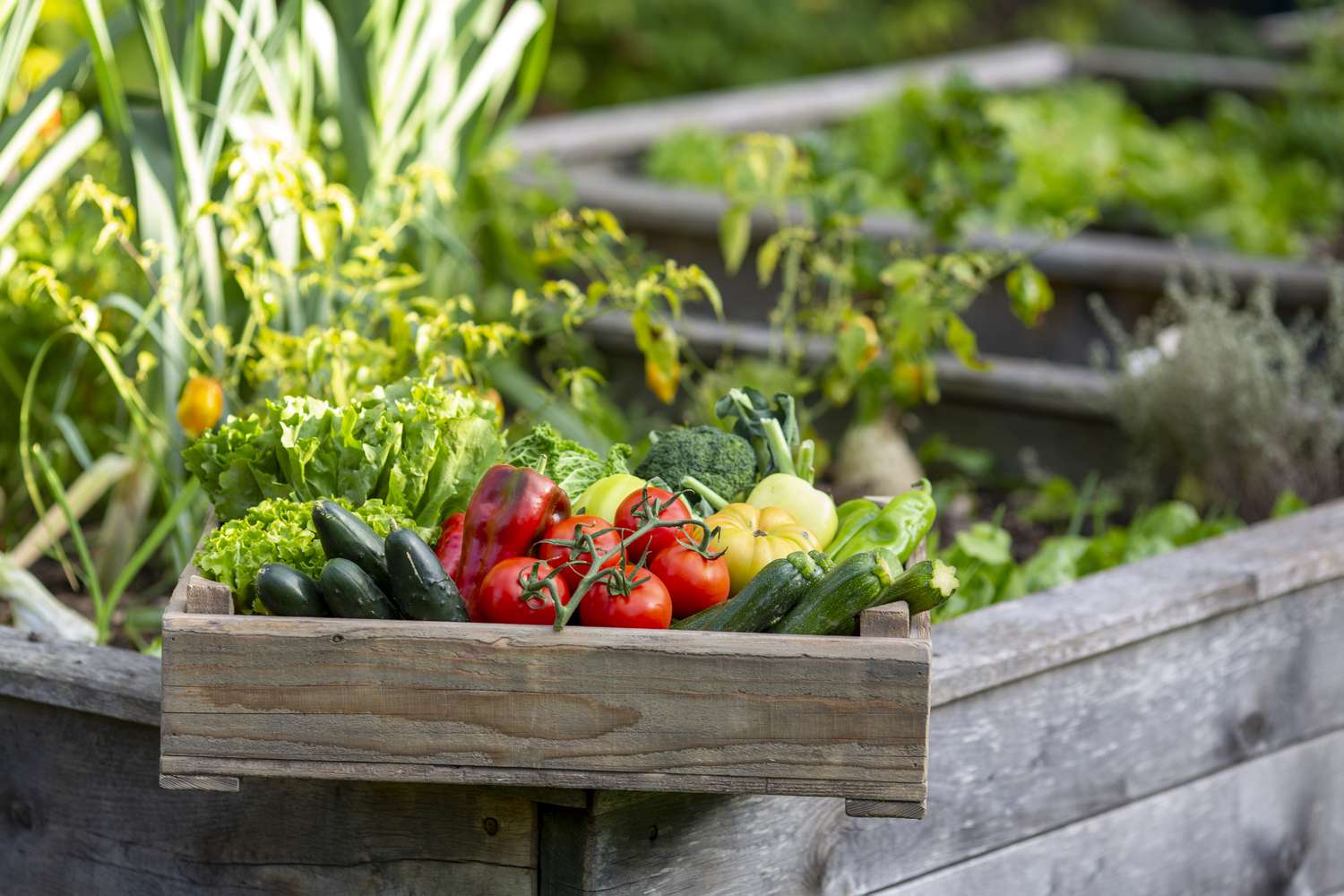At Taste Trove, we believe that home gardening is more than just a hobby—it’s a pathway to healthier eating and sustainable living. Growing your own ingredients allows you to enjoy fresh, nutrient-packed produce that elevates your cooking. From vibrant salads to hearty soups, the flavors of homegrown vegetables, herbs, and fruits are unmatched. This article explores ten healthy recipes that showcase freshly grown ingredients from your garden, along with gardening tips to help you succeed. We’ve also included internal links to Taste Trove resources and external links for additional guidance, making it easy to start your garden-to-table journey.
The Benefits of Home Gardening for Healthy Cooking
Home gardening provides access to fresh, organic produce free from harmful pesticides, ensuring your meals are as healthy as they are delicious. It’s also budget-friendly, reduces your carbon footprint, and promotes physical activity. Whether you have a spacious backyard or a few pots on a balcony, you can grow ingredients for nutritious recipes like those below. Let’s dive into ten healthy, garden-inspired dishes that highlight the best of your harvest.
1. Kale and Quinoa Power Salad
Ingredients (Serves 4):
- 4 cups kale (homegrown), stems removed and chopped
- 1 cup quinoa, cooked
- 1 cup cherry tomatoes (homegrown), halved
- 1 avocado, diced
- ¼ cup red onion, thinly sliced
- 2 tbsp olive oil
- 2 tbsp lemon juice
- Salt and pepper to taste
Instructions:
- Massage kale with 1 tbsp olive oil for 1-2 minutes to soften.
- In a large bowl, combine kale, quinoa, tomatoes, avocado, and onion.
- Whisk together remaining olive oil, lemon juice, salt, and pepper for dressing.
- Toss salad with dressing and serve immediately.
Gardening Tip: Kale thrives in cool weather and well-drained soil. Harvest outer leaves to encourage growth. Learn more in our Guide to Leafy Greens.
External Link: Discover kale varieties at Burpee.
2. Grilled Zucchini and Herb Roll-Ups
Ingredients (Serves 4):
- 2 large zucchinis (homegrown), sliced lengthwise into thin strips
- ½ cup fresh basil (homegrown), chopped
- ¼ cup fresh parsley (homegrown), chopped
- ½ cup ricotta cheese
- 2 tbsp olive oil
- Salt and pepper to taste
Instructions:
- Preheat grill to medium. Brush zucchini strips with olive oil and season with salt and pepper.
- Grill zucchini for 2-3 minutes per side until tender.
- Mix ricotta with basil and parsley. Spread a thin layer on each zucchini strip.
- Roll up strips and secure with toothpicks. Serve as a healthy appetizer.
Gardening Tip: Zucchini needs full sun and regular watering. Harvest when 6-8 inches long for tenderness. See our Zucchini Growing Tips.
External Link: Learn zucchini care at Gardening Know How.
3. Roasted Beet and Spinach Salad
Ingredients (Serves 4):
- 3 medium beets (homegrown), roasted and cubed
- 3 cups spinach (homegrown)
- ¼ cup walnuts, toasted
- ¼ cup crumbled feta cheese
- 2 tbsp olive oil
- 1 tbsp balsamic vinegar
- 1 tsp Dijon mustard
- Salt and pepper to taste
Instructions:
- Preheat oven to 400°F (200°C). Wrap beets in foil and roast for 45-60 minutes. Cool, peel, and cube.
- Whisk olive oil, balsamic vinegar, mustard, salt, and pepper for dressing.
- Toss spinach, beets, walnuts, and feta with dressing.
- Serve as a nutrient-packed side or main.
Gardening Tip: Beets grow best in loose soil. Sow seeds in spring or fall for tender roots. Visit our Root Vegetable Guide.
External Link: Get beet-growing tips at The Old Farmer’s Almanac.
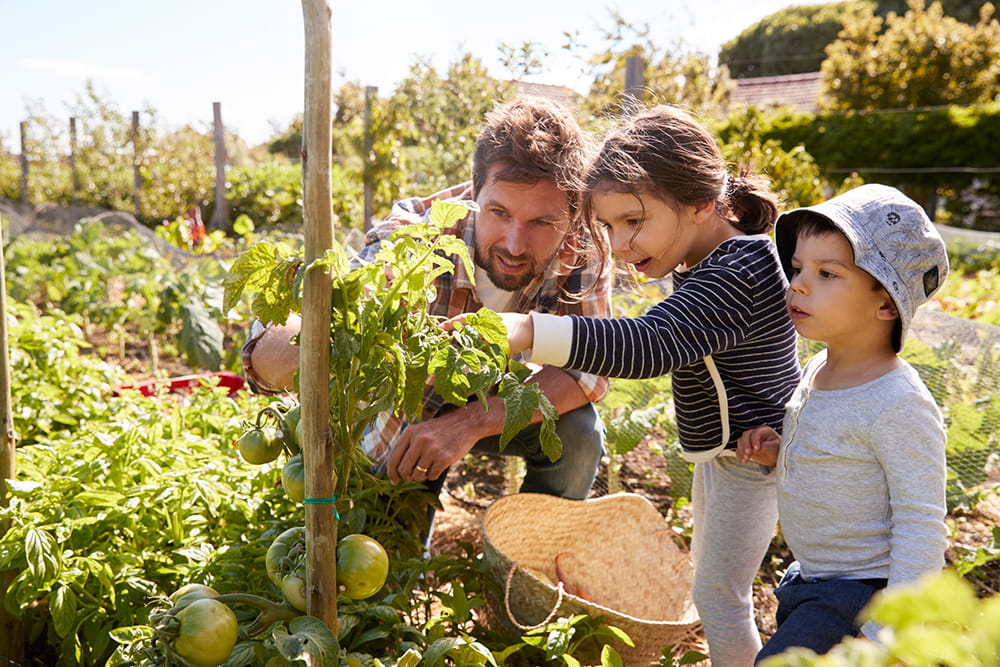
4. Fresh Tomato and Basil Soup
Ingredients (Serves 4):
- 2 lbs tomatoes (homegrown), chopped
- ¼ cup fresh basil (homegrown), chopped
- 1 onion, diced
- 2 cloves garlic (homegrown), minced
- 4 cups vegetable broth
- 2 tbsp olive oil
- Salt and pepper to taste
Instructions:
- Heat olive oil in a pot. Sauté onion and garlic until soft.
- Add tomatoes and broth. Simmer for 20 minutes until tomatoes break down.
- Blend until smooth. Stir in basil, salt, and pepper.
- Serve hot with a drizzle of olive oil.
Gardening Tip: Tomatoes need full sun and support (stakes or cages). Pinch suckers for better yields. Check our Tomato Growing Tips.
External Link: Explore tomato varieties at Mother Earth News.
5. Cucumber and Dill Yogurt Bowl
Ingredients (Serves 4):
- 2 cucumbers (homegrown), sliced
- 1 cup Greek yogurt
- 2 tbsp fresh dill (homegrown), chopped
- 1 clove garlic (homegrown), minced
- 1 tbsp lemon juice
- Salt and pepper to taste
Instructions:
- Mix yogurt, dill, garlic, lemon juice, salt, and pepper in a bowl.
- Add sliced cucumbers and toss to coat.
- Chill for 15 minutes and serve as a refreshing side.
Gardening Tip: Cucumbers thrive in warm soil with consistent moisture. Use trellises to save space. See our Cucumber Growing Guide.
External Link: Learn cucumber care at Better Homes & Gardens.
6. Garlic Scape and Snap Pea Stir-Fry
Ingredients (Serves 4):
- 1 cup garlic scapes (homegrown), chopped
- 2 cups snap peas (homegrown)
- 1 bell pepper (homegrown), sliced
- 2 tbsp soy sauce
- 1 tbsp sesame oil
- 1 tsp ginger, grated
Instructions:
- Heat sesame oil in a wok over medium-high heat.
- Add garlic scapes, snap peas, and bell pepper. Stir-fry for 5-7 minutes.
- Add soy sauce and ginger. Stir for 1 minute.
- Serve over quinoa or brown rice.
Gardening Tip: Garlic scapes appear in early summer; cut them to boost bulb growth. Snap peas love cool weather. Visit our Garlic Growing Guide.
External Link: Discover garlic scapes at Epicurious.
7. Carrot and Ginger Smoothie
Ingredients (Serves 2):
- 2 carrots (homegrown), peeled and chopped
- 1 tbsp fresh ginger (homegrown), grated
- 1 banana
- 1 cup orange juice
- ½ cup Greek yogurt
- 1 tbsp honey
Instructions:
- Blend carrots, ginger, banana, orange juice, yogurt, and honey until smooth.
- Add ice for a colder smoothie, if desired.
- Serve immediately for a vitamin-packed breakfast.
Gardening Tip: Carrots grow best in loose, sandy soil. Ginger thrives in warm climates or pots indoors. Check our Root Vegetable Guide.
External Link: Learn ginger growing at The Spruce.
8. Arugula and Strawberry Salad
Ingredients (Serves 4):
- 3 cups arugula (homegrown)
- 1 cup strawberries (homegrown), sliced
- ¼ cup almonds, sliced
- 2 tbsp olive oil
- 1 tbsp balsamic vinegar
- Salt and pepper to taste
Instructions:
- Toss arugula, strawberries, and almonds in a bowl.
- Whisk olive oil, balsamic vinegar, salt, and pepper for dressing.
- Drizzle over salad and serve fresh.
Gardening Tip: Arugula grows quickly in cool seasons; strawberries need well-drained soil. See our Berry Growing Tips.
External Link: Get strawberry tips at Bon Appétit.
9. Roasted Eggplant Dip
Ingredients (Serves 4):
- 2 eggplants (homegrown), halved
- ¼ cup fresh parsley (homegrown), chopped
- 2 cloves garlic (homegrown), minced
- 2 tbsp tahini
- 2 tbsp lemon juice
- 2 tbsp olive oil
- Salt and pepper to taste
Instructions:
- Preheat oven to 400°F (200°C). Roast eggplants cut-side down for 30-40 minutes.
- Scoop out flesh and blend with parsley, garlic, tahini, lemon juice, olive oil, salt, and pepper.
- Serve with veggie sticks or pita.
Gardening Tip: Eggplants love heat and full sun. Stake plants to support heavy fruit. Visit our Eggplant Growing Guide.
External Link: Learn eggplant care at Almanac.
10. Mint and Pea Soup
Ingredients (Serves 4):
- 2 cups fresh peas (homegrown)
- ¼ cup fresh mint (homegrown), chopped
- 1 onion, diced
- 4 cups vegetable broth
- 2 tbsp olive oil
- Salt and pepper to taste
Instructions:
- Heat olive oil in a pot. Sauté onion until soft.
- Add peas and broth. Simmer for 10 minutes.
- Blend with mint until smooth. Season with salt and pepper.
- Serve warm or chilled.
Gardening Tip: Peas grow best in spring; mint is a hardy perennial. Contain mint to prevent spreading. See our Herb Gardening Basics.
External Link: Discover pea varieties at Gardener’s Supply.
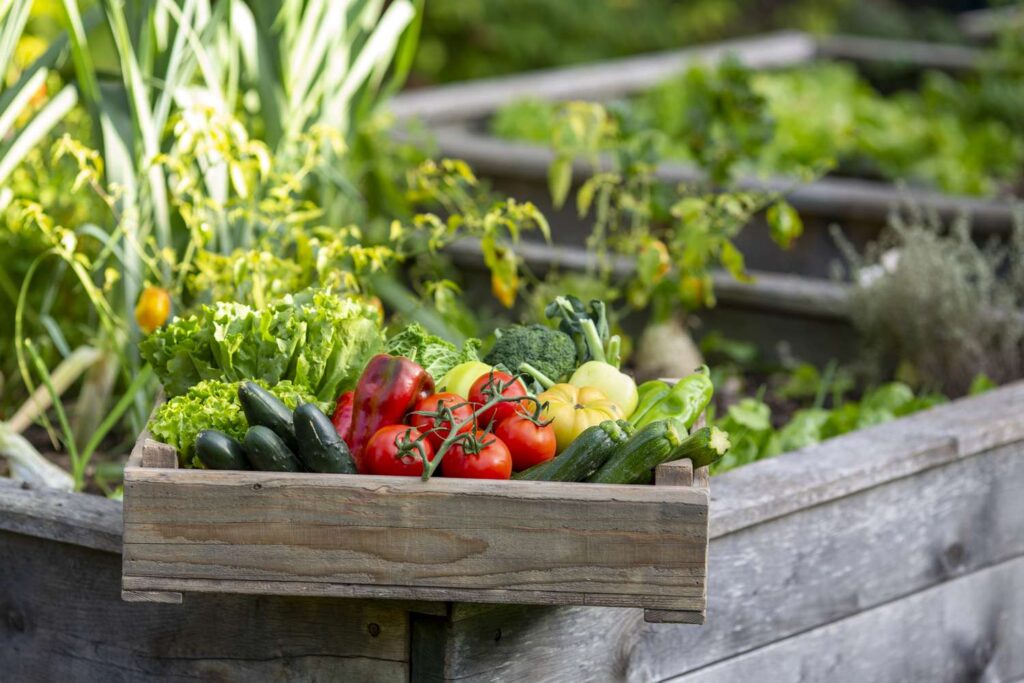
Gardening Tips for Healthy Ingredients
- Start Small: Begin with easy crops like kale or herbs. Our Beginner Gardening Guide has tips.
- Soil Health: Test and enrich soil with compost for nutrient-rich crops. Learn more at Composting 101.
- Pest Control: Use organic methods like neem oil to protect plants. See Gardening Know How.
- Seasonal Planning: Grow cool-season crops (kale, peas) in spring/fall and warm-season crops (tomatoes, eggplants) in summer. Check our Seasonal Gardening Guide.
Conclusion
Home gardening transforms your kitchen with fresh, healthy ingredients that make recipes like those above truly special. At Taste Trove, we’re here to guide you from seed to plate. Explore more healthy recipes in our Recipe Collection and start your garden with our Gardening Guides. For personalized advice, contact us at support@tastetrove.com. Happy gardening and healthy cooking!
FAQs and Products for Home Gardening: Healthy Recipes Using Freshly Grown Ingredients
At Taste Trove, we’re dedicated to helping you grow your own ingredients and create healthy, delicious meals straight from your garden. This FAQ and product guide complements our Home Gardening: Healthy Recipes Using Freshly Grown Ingredients article, answering common questions about growing produce for nutritious recipes and recommending essential products to support your garden-to-table journey. We’ve included internal links to Taste Trove resources and external links for additional guidance.
FAQs About Home Gardening for Healthy Recipes
1. Why should I grow my own ingredients for healthy recipes?
Answer:
Growing your own ingredients ensures you have fresh, organic produce packed with nutrients and flavor, free from harmful chemicals. It’s cost-effective and sustainable, and homegrown crops like kale for our Kale and Quinoa Power Salad or tomatoes for Fresh Tomato and Basil Soup elevate your dishes with unmatched freshness.
External Link: Learn about the health benefits of gardening at The Old Farmer’s Almanac.
2. What are the easiest vegetables to grow for healthy cooking?
Answer:
Beginners should try kale, zucchini, spinach, and cucumbers, which are low-maintenance and versatile for recipes like our Grilled Zucchini and Herb Roll-Ups or Cucumber and Dill Yogurt Bowl. These crops thrive in various climates and yield generously with minimal effort.
Internal Link: Explore our Beginner Gardening Guide.
3. How can I grow ingredients in a small space for healthy meals?
Answer:
Use containers, vertical planters, or window boxes for small spaces. Crops like arugula for Arugula and Strawberry Salad or herbs like dill for Cucumber and Dill Yogurt Bowl grow well in pots. Vertical trellises are great for peas or cucumbers, maximizing space.
External Link: Find small-space gardening tips at Better Homes & Gardens.
4. How do I maintain soil health for growing nutrient-rich produce?
Answer:
Healthy soil is key for nutrient-packed crops like beets for our Roasted Beet and Spinach Salad. Add compost, rotate crops annually, and avoid over-fertilizing. Test soil pH to ensure it suits crops like tomatoes or spinach.
Internal Link: Learn more in our Composting 101.
External Link: Get soil health tips at Gardening Know How.
5. How can I grow ingredients year-round for healthy recipes?
Answer:
Use cold frames, greenhouses, or indoor grow lights for year-round gardening. Grow cool-season crops like spinach for Roasted Beet and Spinach Salad in fall or spring, and indoor herbs like mint for Mint and Pea Soup during winter.
Internal Link: Check out our Indoor Gardening Tips.
External Link: Explore year-round gardening at Mother Earth News.
6. How do I prevent pests naturally to keep my ingredients safe?
Answer:
Use organic methods like companion planting (e.g., marigolds with eggplants for Roasted Eggplant Dip) or neem oil to deter pests. Hand-pick insects or use row covers to protect crops like snap peas for Garlic Scape and Snap Pea Stir-Fry.
Internal Link: See our Organic Pest Control Guide.
External Link: Learn natural pest control at The Spruce.
7. How can I store homegrown produce to use in recipes later?
Answer:
Freeze, can, or dry your harvest to enjoy year-round. For example, freeze peas for Mint and Pea Soup or can tomatoes for Fresh Tomato and Basil Soup. Store root vegetables like carrots in a cool, dark place for Carrot and Ginger Smoothie.
Internal Link: Visit our Food Preservation Guide.
External Link: Discover preservation techniques at National Center for Home Food Preservation.
8. What are the best tools for harvesting ingredients for recipes?
Answer:
Use pruning shears for herbs like basil in Fresh Tomato and Basil Soup and a garden fork for root crops like beets in Roasted Beet and Spinach Salad. A sharp knife ensures clean cuts to maintain plant health.
Internal Link: Check our Essential Gardening Tools.
External Link: Find harvesting tips at Burpee.
9. How do I make my garden-to-table recipes healthier?
Answer:
Use fresh, homegrown ingredients to reduce sodium and additives. Incorporate nutrient-dense crops like kale in Kale and Quinoa Power Salad or ginger in Carrot and Ginger Smoothie. Minimize processed ingredients and opt for olive oil or fresh herbs for flavor.
Internal Link: Explore our Healthy Cooking Tips.
External Link: Get healthy cooking ideas at Bon Appétit.
10. Can gardening and cooking be a family activity?
Answer:
Absolutely! Kids can plant seeds for strawberries in Arugula and Strawberry Salad or help harvest zucchini for Grilled Zucchini and Herb Roll-Ups. In the kitchen, they can mix ingredients or assemble dishes, making it a fun, educational experience.
Internal Link: See our Family Gardening Activities.
External Link: Find family gardening ideas at Better Homes & Gardens.
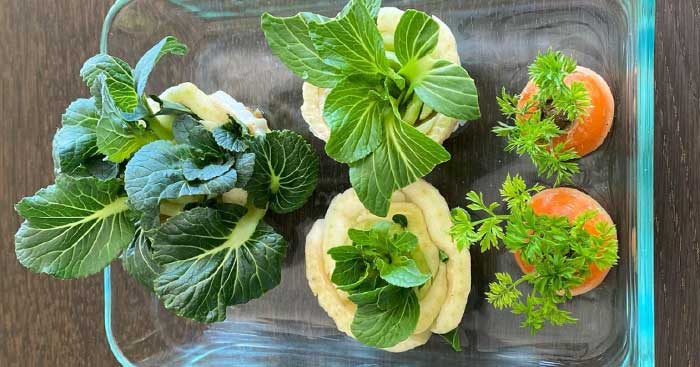
Recommended Products for Home Gardening and Healthy Cooking
These products will help you grow and prepare the ingredients featured in our Home Gardening: Healthy Recipes Using Freshly Grown Ingredients article, making your garden-to-table experience seamless and enjoyable.
1. Container Garden Kit
Description: Perfect for small spaces, this kit is ideal for growing kale, cucumbers, or herbs like mint for Mint and Pea Soup. Includes pots and drainage trays.
Product: Gardener’s Supply Self-Watering Planter
Where to Buy: Gardener’s Supply
Price: Approx. $30–$50
2. Organic Seed Collection
Description: Start your garden with organic seeds for spinach, tomatoes, and arugula, perfect for recipes like Arugula and Strawberry Salad. Includes a variety of non-GMO seeds.
Product: Burpee Organic Seed Starter Pack
Where to Buy: Burpee
Price: Approx. $15–$25
3. Indoor Grow Light System
Description: Grow herbs like basil for Fresh Tomato and Basil Soup indoors year-round with a compact grow light system. Adjustable for plant growth stages.
Product: AeroGarden Harvest Elite
Where to Buy: AeroGarden
Price: Approx. $100–$150
4. Compost Starter Kit
Description: Turn kitchen scraps from recipes like Carrot and Ginger Smoothie into compost to enrich soil for crops like beets or kale. Compact for home use.
Product: Back to the Roots Organic Composter
Where to Buy: Back to the Roots
Price: Approx. $40–$60
5. Gardening Hand Tools
Description: A trowel, pruner, and gloves are essential for harvesting garlic scapes for Garlic Scape and Snap Pea Stir-Fry or eggplants for Roasted Eggplant Dip.
Product: Fiskars Softouch Garden Tool Set
Where to Buy: Amazon
Price: Approx. $20–$30
6. High-Speed Blender
Description: Blend smooth soups like Mint and Pea Soup or smoothies like Carrot and Ginger Smoothie with a powerful blender.
Product: Vitamix Explorian Blender
Where to Buy: Vitamix
Price: Approx. $250–$350
7. Trellis for Climbing Plants
Description: Support climbing crops like snap peas for Garlic Scape and Snap Pea Stir-Fry or cucumbers for Cucumber and Dill Yogurt Bowl.
Product: Gardener’s Supply Cucumber Trellis
Where to Buy: Gardener’s Supply
Price: Approx. $30–$50
Conclusion
Home gardening for healthy recipes is a rewarding way to enjoy fresh, nutritious meals while embracing sustainable living. With the right tools and knowledge, you can grow ingredients for Taste Trove’s recipes like Kale and Quinoa Power Salad. Explore more at our Recipe Collection and Gardening Guides. For questions, reach out at support@tastetrove.com. Happy gardening and healthy eating!
Additional FAQs for Home Gardening: Healthy Recipes Using Freshly Grown Ingredients
At Taste Trove, we’re committed to helping you grow your own ingredients for healthy, delicious recipes. This set of additional frequently asked questions (FAQs) builds on our Home Gardening: Healthy Recipes Using Freshly Grown Ingredients article, addressing more aspects of cultivating produce for nutritious meals. These FAQs provide practical advice for gardeners and cooks, with internal links to Taste Trove resources and external links for further exploration.
FAQs About Home Gardening for Healthy Recipes
1. How can I choose the best crops for healthy recipes?
Answer:
Select crops that are nutrient-dense and versatile, such as kale for our Kale and Quinoa Power Salad or beets for Roasted Beet and Spinach Salad. Leafy greens, root vegetables, and herbs like basil or mint are easy to grow and packed with vitamins. Choose varieties suited to your climate and growing season for the best results.
Internal Link: Explore crop selection in our Beginner Gardening Guide.
External Link: Find nutrient-rich crop ideas at Burpee.
2. What’s the best way to start a home garden for cooking if I’m a beginner?
Answer:
Start with a small plot or containers and focus on easy crops like spinach for Roasted Beet and Spinach Salad or basil for Fresh Tomato and Basil Soup. Use quality soil, ensure adequate sunlight, and water consistently. Begin with a few plants to build confidence before expanding.
Internal Link: Get started with our Guide to Starting a Home Garden.
External Link: Learn beginner gardening tips at The Old Farmer’s Almanac.
3. How do I maximize the nutritional value of my homegrown produce?
Answer:
Harvest at peak ripeness—early morning is best—to retain nutrients. For example, pick kale for Kale and Quinoa Power Salad when leaves are young and tender. Avoid overcooking vegetables like peas in Mint and Pea Soup to preserve vitamins. Use organic fertilizers to boost soil nutrients.
Internal Link: See our Harvesting Tips for Fresh Produce.
External Link: Discover nutrient preservation tips at Mother Earth News.
4. Can I grow organic ingredients at home for healthier recipes?
Answer:
Yes, organic gardening is achievable by avoiding synthetic pesticides and using natural fertilizers like compost. Grow crops like cucumbers for Cucumber and Dill Yogurt Bowl or eggplants for Roasted Eggplant Dip with organic methods to ensure they’re safe and healthy.
Internal Link: Learn more in our Organic Gardening Guide.
External Link: Explore organic gardening at Gardening Know How.
5. How do I plan a garden to have ingredients for recipes year-round?
Answer:
Use succession planting and season extenders like cold frames to grow crops in different seasons. Plant cool-season crops like spinach for Roasted Beet and Spinach Salad in spring and fall, and warm-season crops like zucchini for Grilled Zucchini and Herb Roll-Ups in summer. Indoor herbs like mint ensure year-round flavor.
Internal Link: Check our Seasonal Gardening Guide.
External Link: Learn about season extension at The Spruce.
6. How can I save seeds from my garden for future planting?
Answer:
Save seeds from open-pollinated or heirloom varieties like tomatoes for Fresh Tomato and Basil Soup. Harvest seeds from ripe produce, dry them thoroughly, and store in a cool, dry place. Avoid hybrid varieties, as their seeds may not produce true-to-type plants.
Internal Link: See our Seed Saving Guide.
External Link: Get seed-saving tips at Seed Savers Exchange.
7. What are common mistakes to avoid when growing ingredients for recipes?
Answer:
Avoid overwatering, poor soil preparation, or planting out of season. For example, ensure proper drainage for eggplants used in Roasted Eggplant Dip and sow carrots for Carrot and Ginger Smoothie in loose soil to prevent stunted growth. Regular weeding and pest checks are also key.
Internal Link: Learn more in our Common Gardening Mistakes to Avoid.
External Link: Find gardening pitfalls at Better Homes & Gardens.
8. How can I use my garden to create budget-friendly healthy meals?
Answer:
Growing your own ingredients reduces grocery costs. Crops like peas for Mint and Pea Soup or arugula for Arugula and Strawberry Salad are inexpensive to grow. Use garden scraps for stocks or compost to further save money.
Internal Link: Explore our Budget-Friendly Cooking Tips.
External Link: Learn cost-saving gardening at Bon Appétit.
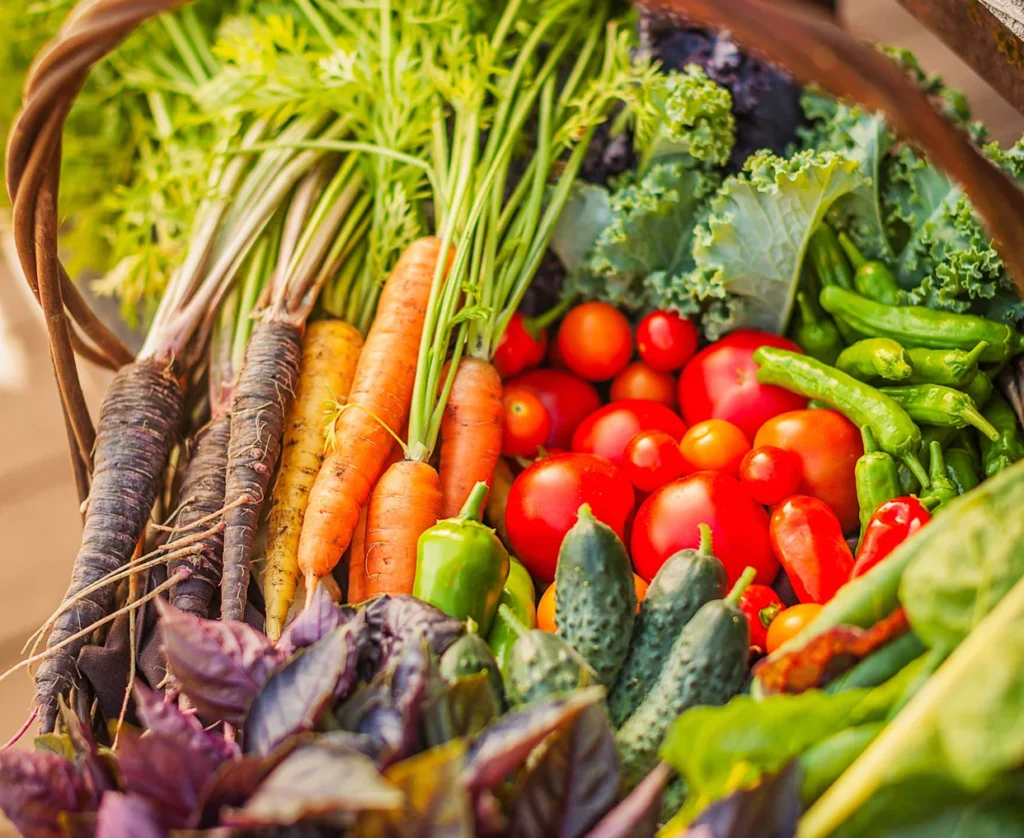
9. How do I ensure my homegrown ingredients are flavorful for recipes?
Answer:
Flavor depends on healthy soil, proper watering, and timely harvesting. For example, harvest basil for Fresh Tomato and Basil Soup before it flowers to maximize flavor. Use companion planting, like growing garlic near spinach for Roasted Beet and Spinach Salad, to enhance taste and deter pests.
Internal Link: Visit our Companion Planting Guide.
External Link: Get flavor-enhancing tips at Epicurious.
10. How can I teach myself to cook with homegrown ingredients?
Answer:
Start with simple recipes like Cucumber and Dill Yogurt Bowl to build confidence. Experiment with herbs like mint or basil to enhance dishes. Watch tutorials or read our Healthy Cooking Tips to learn techniques for showcasing your garden’s produce.
External Link: Find cooking tutorials at Serious Eats.
Conclusion
These FAQs provide actionable insights to help you grow fresh ingredients for healthy recipes like those in our Home Gardening: Healthy Recipes Using Freshly Grown Ingredients article. Whether you’re a beginner or seasoned gardener, Taste Trove is here to support your journey. Explore more in our Gardening Guides or contact us at support@tastetrove.com for personalized advice. Happy gardening and cooking!
